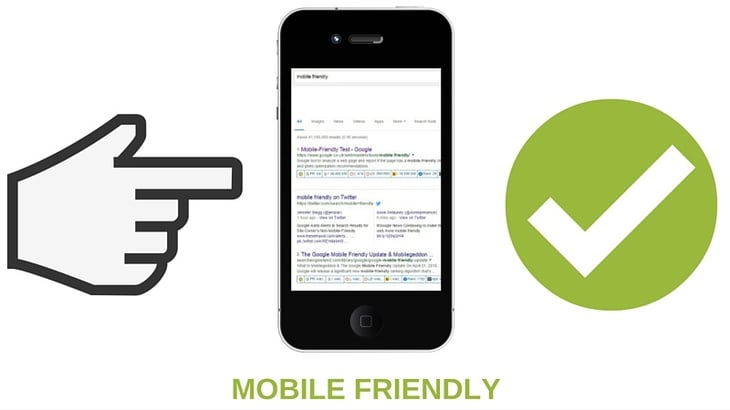How To Make Your B2B Website Mobile Friendly

If you're wondering how to make your website mobile friendly, you're not alone. With more people than ever before accessing the web from a mobile device such as a smartphone or tablet, one thing's for sure – if you're not tapping into the mobile marketplace, you're missing out. Nobody wants an outdated website that can't be viewed on the latest devices, and there are a few things you can do to ensure that your website looks great on all devices, from an Android smartphone to a Windows tablet.
Embrace Responsive Design
You don't need to create a separate mobile site – in fact, doing so could mean spending more time, and money on your website. Responsive design ensures that your website uses the same HTML code on all devices, implementing various CSS style rules that effectively optimise the site for a range of different devices. What does that mean?
- Lower maintenance and setup costs
- Responsive design is recommended by Google
- Your URL is the same on all devices
- Users get consistent information across all devices
Responsive design can save you time and money – it's well worth it.
Think Like a Visitor
Those sites that require pinching to zoom and view small content are not mobile friendly, despite what developers might tell you. Your website should be viewable on all devices by simply navigating with your thumb – as many of us do when viewing sites on our mobile device on the train, bus or when we're out and about. Make sure you space out buttons and menu options so that even those with larger fingers can easily navigate – there's little more annoying than having to zoom in to click a tiny button.
Keep it Simple
Sometimes, simplicity is the best remedy, and when you're optimising your website for viewing on mobile devices, a clean layout and concise copy will go a long way. Too much distraction such as images and videos can detract from the impact your website has on a visitor. If you are including images or videos, using smaller files minimises loading time, making it less likely that visitors will bounce.
Make it Easy to Get in Touch
Your contact information – such as your email address, phone number and address – should be easy for visitors to find. Sometimes mobile visitors are in a hurry and just need to find your contact information or opening hours. Make life easier for them, not harder.
Ensure Videos Work
Nothing is more frustrating than trying to view Flash content on an iOS device or attempting to watch a video on a site when it isn't compatible with your device. If you're frustrated by this, imagine how your customers will feel? Including a video on your mobile site is a great idea, but ensure that your player runs HTML 5, as it's compatible with most mobile devices. Using a lightweight player minimises loading times, providing a superior user experience.
Design Forms for Mobile Viewing
Nobody wants to fill out a length form with hundreds of drop-down options when they're on a mobile device. So make your forms as short and easy to fill out as possible – ask for the bare minimum information you need to contact leads, such as name, contact number and email address. You can take advantage of the technology built into mobile devices to optimise your forms too – for example, a phone's GPS can allow address fields to be pre-populated!
Test, Test and Test again
It goes without saying that once you've optimised your website for mobile viewing, you'll need to ensure it looks good on all types of mobile devices, including Android, Windows and iOS devices. There is a range of tools out there for mobile testing, such as Solidifyapp, so take advantage of these to ensure your company's website is the very best it can be, no matter how it's viewed.
It doesn't have to be a challenge to ensure your B2B website is mobile friendly – just a few tweaks and a little bit of thought for the user experience and you'll have a site that looks great on any device. Remember, if you're in doubt about anything, keep it simple and you can't go wrong.


